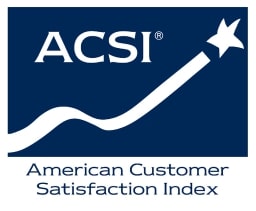Accepting the idea that there are different types of people in this world, we know this about some: There are those who have no idea how technology works, don’t care to know how it works, and are happy as long as they have the internet access they need to surf the web, game and stream their shows. There are those who understand a little bit more about tech and at times are curious enough to learn more, but in general, they are also happy as long as they have internet access to support their online tasks and hobbies. Then there are those who (if they don’t work in a technology field, could if they desired) stay up to date on all the latest technological advancements, innovations, and have a vast understanding about the internet and how all parts of it work together.
This article is for the second aforementioned type of person.
You Know Of The Cloud
Okay, so you know of the cloud; in your mind, you can “kinda-sorta” picture how it works in relation to applications you use. But you don’t really know what the cloud is. Is it something tangible or more virtual in being? In the simplest of terms, the cloud is a network of a whole lot of servers that store tons of data, which can be remotely accessed via the internet.
I know what you may be thinking here— “I thought that’s what the internet its, so is the cloud the same thing as the internet?” Not exactly.
The Cloud vs. The Internet
The internet is a network connecting your computer to a seemingly infinite number of other computers and servers all over the world. Before the cloud, information files you downloaded from the internet or projects and documents you created could be saved to your computer’s internal hard drive to retrieve later. If you wanted to access that saved information from a different computer, you stored it on external hard drives, CDs or, kicking it way back old-school style, floppy disks.
The cloud is a result of advancing internet technology. Website hosting platforms; gaming, entertainment and social media applications; and document sharing programs are all products of cloud computing and storage. A Facebook “program” doesn’t have to be installed on your laptop, smart phone or any other device to be able to pull up your account and see new posts on your newsfeed instantaneously. Netflix shows and movies can be viewed on any screen in your house with an internet connection, and through your personal profile, you can stop watching on your TV to go pull it up and continue right where you left off on your laptop. Google Docs allows you to start writing an essay on a shared classroom computer and pull it up on your personal computer at home to finish it later, without having to download the document onto a flash drive.
Connecting To The Cloud
Of course, without the internet, there would be no cloud. The cloud stores all the information, apps, and data that subscribers can conveniently access from any internet-accessible device. Your internet connection allows communication between your device and all the networks on the internet. The cloud utilizes your internet connection to deliver specific resources as “services” from companies (or service providers) by allowing remote access to their servers.
So Now You Know
Now that you have a better understanding of the cloud through this simplistic explanation, make sure you have the internet connection you need to access all the apps and services you use. GVEC Internet Internet offers wireless and fiber internet options with plenty of bandwidth to support all your cloud-based connections. Call us at 800-699-4832, or visit our Internet Availability Map to see what GVEC Internet Internet services are available in your area.

